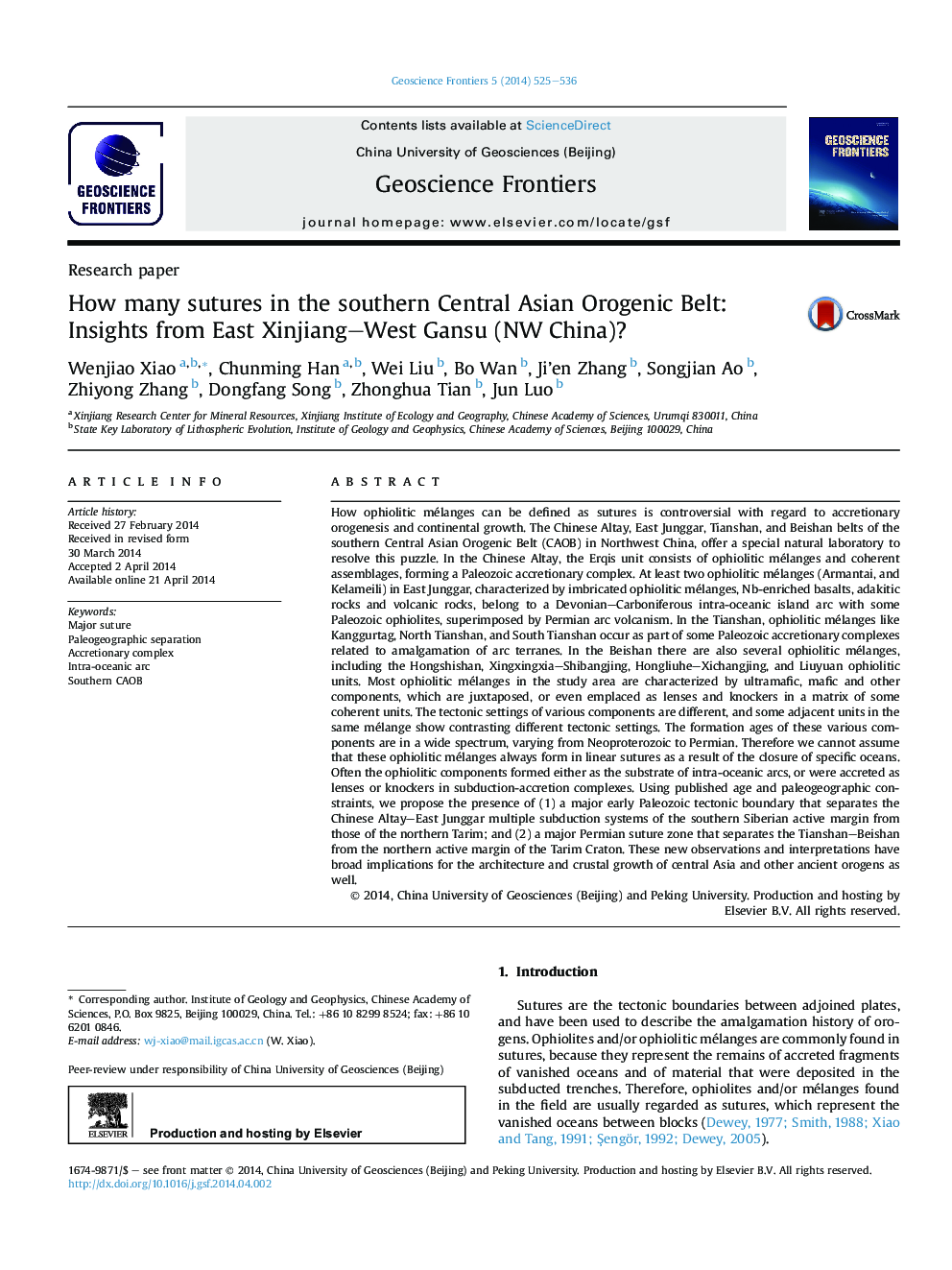| Article ID | Journal | Published Year | Pages | File Type |
|---|---|---|---|---|
| 4681720 | Geoscience Frontiers | 2014 | 12 Pages |
•Ophiolites either as substrata of arcs, or as lenses in accretionary complexes.•An early Paleozoic major tectonic boundary in the southern CAOB.•A Permian major suture zone in southern CAOB.
How ophiolitic mélanges can be defined as sutures is controversial with regard to accretionary orogenesis and continental growth. The Chinese Altay, East Junggar, Tianshan, and Beishan belts of the southern Central Asian Orogenic Belt (CAOB) in Northwest China, offer a special natural laboratory to resolve this puzzle. In the Chinese Altay, the Erqis unit consists of ophiolitic mélanges and coherent assemblages, forming a Paleozoic accretionary complex. At least two ophiolitic mélanges (Armantai, and Kelameili) in East Junggar, characterized by imbricated ophiolitic mélanges, Nb-enriched basalts, adakitic rocks and volcanic rocks, belong to a Devonian–Carboniferous intra-oceanic island arc with some Paleozoic ophiolites, superimposed by Permian arc volcanism. In the Tianshan, ophiolitic mélanges like Kanggurtag, North Tianshan, and South Tianshan occur as part of some Paleozoic accretionary complexes related to amalgamation of arc terranes. In the Beishan there are also several ophiolitic mélanges, including the Hongshishan, Xingxingxia–Shibangjing, Hongliuhe–Xichangjing, and Liuyuan ophiolitic units. Most ophiolitic mélanges in the study area are characterized by ultramafic, mafic and other components, which are juxtaposed, or even emplaced as lenses and knockers in a matrix of some coherent units. The tectonic settings of various components are different, and some adjacent units in the same mélange show contrasting different tectonic settings. The formation ages of these various components are in a wide spectrum, varying from Neoproterozoic to Permian. Therefore we cannot assume that these ophiolitic mélanges always form in linear sutures as a result of the closure of specific oceans. Often the ophiolitic components formed either as the substrate of intra-oceanic arcs, or were accreted as lenses or knockers in subduction-accretion complexes. Using published age and paleogeographic constraints, we propose the presence of (1) a major early Paleozoic tectonic boundary that separates the Chinese Altay–East Junggar multiple subduction systems of the southern Siberian active margin from those of the northern Tarim; and (2) a major Permian suture zone that separates the Tianshan–Beishan from the northern active margin of the Tarim Craton. These new observations and interpretations have broad implications for the architecture and crustal growth of central Asia and other ancient orogens as well.
Graphical abstractFigure optionsDownload full-size imageDownload as PowerPoint slide
